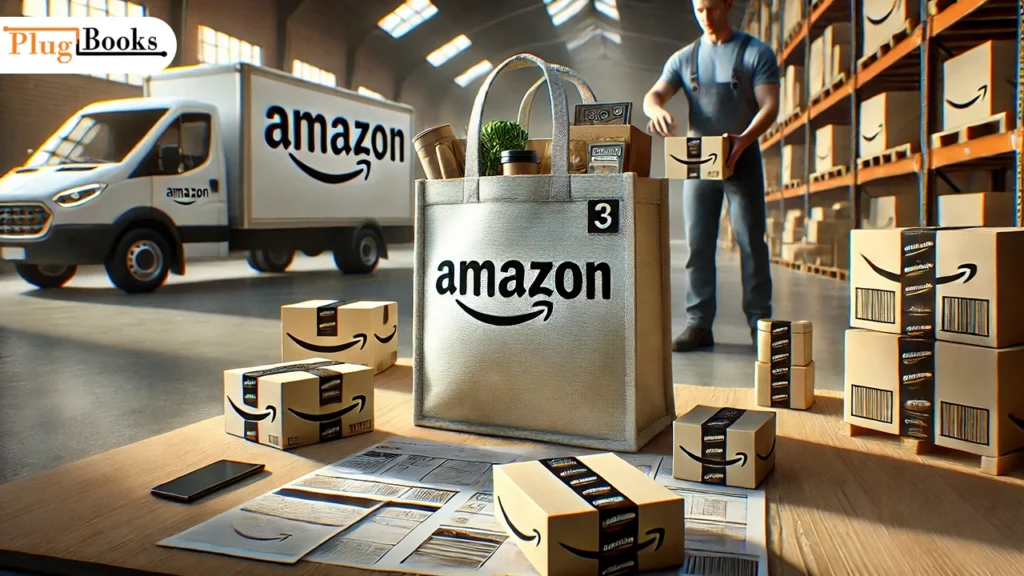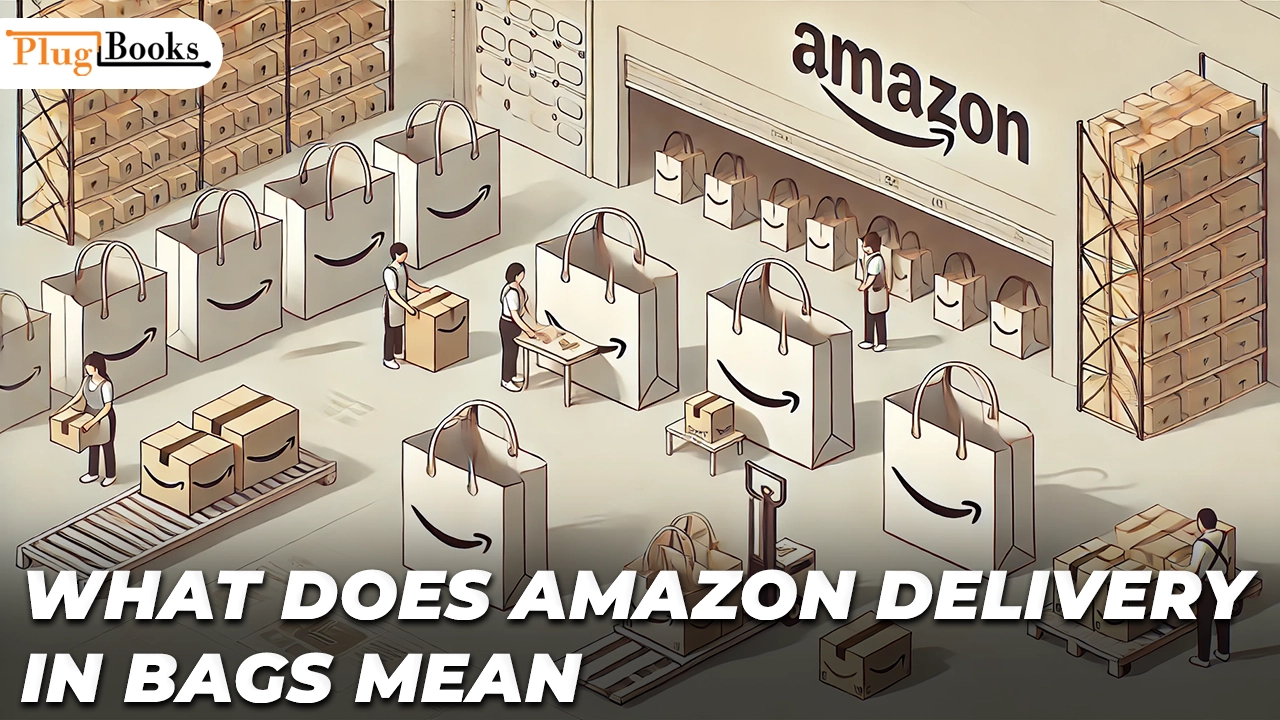If you’ve ever shopped on Amazon, you’ve probably noticed that some of your orders come in cardboard boxes, while others are shipped in bags. What does Amazon delivery in bags mean, and why does the company choose this packaging method for certain items?
This guide will take you through the ins and outs of what Amazon delivery in bags entails, explore the benefits and drawbacks, and help you understand the larger picture of Amazon’s packaging strategies. Whether you’re a frequent Amazon shopper or just curious about how the company handles packaging, this guide will provide useful insights.
5 Key Takeaways
- Bags are used for small, lightweight, or multiple items.
- They help reduce waste and are often recyclable.
- Packing and shipping are faster with bags.
- Fragile or heavy items still need boxes.
- Sellers can optimize inventory and shipping by understanding this strategy.
What Does Amazon Delivery in Bags Really Mean?
Unlike the usual cardboard boxes most people are used to, Amazon delivery in bags refers to the use of large, flexible plastic bags to ship goods. These bags are often used for smaller, less delicate items and are designed to protect contents from:
- Dirt and dust
- Moisture
- Minor impacts during transit
Why Does Amazon Use Bags for Certain Items?
Amazon chooses bags based on several factors, including cost efficiency, sustainability, and operational convenience.
1. Cost Efficiency for Amazon and Customers
- Bags are cheaper to manufacture and ship compared to boxes.
- Lighter bags reduce transportation costs for small items.
- Cost savings can help Amazon keep product prices lower for customers, and tools like Amazon Price Tracking History can help sellers monitor pricing trends and stay competitive.
2. Sustainability Goals
- Amazon aims for net-zero carbon emissions by 2040.
- Bags use less packaging material, reducing waste.
- Many bags are recyclable and occupy less space in warehouses, lowering the carbon footprint of storage and transit.
3. Improved Operational Efficiency
- Bags allow warehouse staff to pack items faster than folding boxes.
- More goods can fit in the same space, improving inventory management.
- Speedier packing leads to quicker delivery for customers.

When Does Amazon Use Bags Instead of Boxes?
Not every order is shipped in a bag. Factors such as product size, weight, and fragility determine the packaging type. Bags are more likely used for:
1. Small, Lightweight Items
Products that fit well in bags include:
- Clothing (t-shirts, socks, dresses)
- Small electronics (chargers, headphones, phone cases)
- Books
- Household goods (small towels, cleaning supplies)
2. Multiple Small Items
- Amazon often groups several small items in a single larger bag to reduce excess packaging and shipping costs.
3. Eco-Friendly and Sustainable Packaging Options
- Orders with Frustration-Free Packaging or other eco-conscious options may come in bags to reduce environmental impact.
4. Reusable Bags for Certain Product Categories
- Some reusable bags are designed for groceries or Amazon’s private-label products.
- These are sturdy enough to transport goods safely while reducing waste.
Pros and Cons of Amazon Delivery in Bags
Pros
- Faster and More Efficient Shipping: Lightweight bags allow for quicker packing and faster delivery.
- Environmental Benefits: Bags use less material and are often recyclable.
- Cost Savings: Lower packaging and shipping costs can improve pricing for customers.
- Convenience for Small Products: Space-saving and simple without compromising protection.
Cons
- Limited Protection for Fragile Items: Bags are less protective than boxes for delicate goods.
- Not Suitable for All Products: Heavy or large items still require boxes.
- Customer Perception: Some shoppers may prefer the traditional box-unpacking experience.
How Amazon Is Innovating Packaging
Amazon continues to experiment with sustainable, efficient packaging options:
- Frustration-Free Packaging: Recyclable and easy-to-open materials reduce extra packing.
- Recyclable and Biodegradable Materials: Alternatives to plastic include paper and biodegradable polymers.
- Optimized Packaging for Transportation: Streamlined packing reduces wasted space, fuel use, and emissions.
How PlugBooks Can Help Amazon Sellers
For Amazon sellers, understanding what Amazon delivery in bags means is important for inventory planning and shipping efficiency. Amazon seller tools from PlugBooks make it easier to manage your store by providing tools to track orders, monitor inventory, and optimize logistics.
By integrating your sales data with financial platforms like QuickBooks and Xero, PlugBooks helps sellers streamline operations, reduce costs, and enhance overall profitability—making it simpler to adapt to packaging and shipping trends like Amazon’s bag deliveries.

FAQs About Amazon Delivery in Bags
1. Why does Amazon ship some items in bags instead of boxes?
Amazon uses bags for smaller, lightweight, or multiple items because they are cheaper, more sustainable, and faster to pack than boxes.
2. Are items in Amazon bags safe during shipping?
Yes, Amazon bags are designed to protect contents from minor shocks, moisture, and dirt, but fragile items are usually shipped in boxes for better protection.
3. Can I request my Amazon orders to come in a bag?
Not directly. Packaging depends on the item’s size, weight, and fragility, as well as Amazon’s sustainability and operational policies.
4. Are Amazon bags recyclable?
Most Amazon delivery bags are made from recyclable materials, and some are even reusable for groceries or storage.
5. Do bags help Amazon reduce environmental impact?
Yes, bags often use less material than boxes and take up less space, helping reduce waste and carbon footprint.
6. How do bags affect shipping costs for customers?
Using bags helps Amazon cut costs on packaging and shipping, which can help keep product prices lower for customers.
7. How can sellers benefit from understanding Amazon bag deliveries?
Knowing what does Amazon delivery in bags means helps sellers optimize inventory, plan packaging, and improve shipping efficiency.
Final Thoughts: What Does Amazon Delivery in Bags Mean for You?
What does Amazon delivery in bags mean for shoppers? It is part of Amazon’s effort to make deliveries more sustainable, cost-effective, and efficient. While bags are not suitable for every product, they provide a smart alternative for smaller, less fragile items.
Next time your Amazon order arrives in a bag, you’ll know it’s part of a strategy aimed at faster deliveries, reduced waste, and better customer experience. As Amazon continues to innovate, expect even more eco-friendly and efficient packaging solutions in the future.




